I have always enjoyed teas, and though I am not big on caffeinated
drinks, mainly coffee; tea remains very much intact in one of my preferred
beverages.
To be honest, I am not an expert on tea, having started on tea only a
few years ago though I have always enjoyed varieties of Chinese tea and herbal
tea; preferring the latter due to the milder and natural properties and most
importantly the caffeine-free part of the herbal variants.
In recent years, I have expanded my selection of teas and experimented
with the different types of tea; becoming bolder with each of my adventure. I
have learnt quite a deal about some of the teas as well, fueled by my personal
curiosity and interests in the history and background of the types of tea and
of course, also the way to enjoy the best qualities of the tea.
It is not just as simple as putting the tea in a cup and just drink it,
for that will just be a cup of drink and tea is not just merely a drink to just
gush down the throat, but rather, to be appreciated for its natural properties
and value.
It takes a whole new horizon to the meaning of enjoying your drink.
Chinese teas are probably one of the most exquisite teas around the
world, and are known mainly for their tea leaves processing methods according
to the traditional Chinese techniques, originated from ancient China. These beverages
are made from the leaves of the tea plants infused or rather, steeped in the
boiled water; usually hot between 75°-80°C.
Chinese
tea is an important element in the Chinese community; being one of the most
essential necessities in life to the Chinese and is classified as one of the
Seven Necessities in Life (for the Chinese folks) along with wood (for fire),
oil, salt, soy, vinegar, rice.
One
can only imagine how important Chinese tea, which is already part of the
average Chinese man’s life; substituting even water as part of their daily
fluid intake.
The
Chinese tea is not just a beverage to be enjoyed during gatherings, parties or
any special occasion but can be brewed and drunk throughout the day as though
one would drink water.
It
is no wonder the Chinese tea is often touted for its health benefits with its
popularity though in a seemingly mundane practice.
The
history of Chinese tea and how it has assimilated into the daily lives of the
Chinese population dates back to 2737 BCE; according to a largely circulated
and shared legend on how a leaf from a tea plant, or rather, shrub fell into
the water that the Emperor Shennong was apparently boiling at that time. The
unsuspecting tea leaf breathed that light flavor into the plain water; giving
it that additional taste and aroma and perhaps, in other words, enhanced the
plain old water which then spiraled into a frenzy and gave birth to the humble
beginnings of the Chinese tea and the practice of drinking tea until this very
day.
I
have always loved Chinese tea; for they are natural complements to a light
beverage during gatherings and of course, meals, particularly Chinese cuisine
where Chinese tea is a mandatory presence to complete the meal.
For
someone who loves Chinese food, and of course with roots in the Chinese, how
could I not know or even love Chinese tea?
Chinese
tea is just customary, if not mandatory, to most Chinese meals.
I
have enjoyed and learnt about the varieties of Chinese tea; and the common ones
being Pu-Erh, Jasmine, Chrystanthemum, Tie Guan Yin, Biluouchun, Houkui, and
the list goes on.
I
recently had the honor to be presented with a few varieties of Chinese tea;
courtesy of Teavivre of China.
It
is such a privilege to be selected to sample the variants of reputable Chinese
tea and from a well-established company nonetheless that I just could not wait
to try out the tea samples when they arrived.
*Note:
I will be doing individual post on each of the
tea; to dedicate to the specialties and unique properties of each and every one
of the tea type.
It
will be more beneficial to learn and to appreciate the tea type, and at the
same time understanding the history and stories associated with each and every
one to further cherish the value and savor each sip of the tea as we drink.
Long
Jing (龍井) is personally
one of my favorite tea; among all the types of Chinese tea and it is also ranked
the highest in the list of the famous teas in China.
Long
Jing is in its form, a green tea, and depending on its variety or grade, could
vary in its quality though it is considered one of the premium tea among the
Chinese tea.
The quality of Long Jing is the determining factor to its deserving price or value, and its grade can range from a ranking scale of Superior (highest quality) and then 1-5.
There
are a total of 6 grades for the Long Jing tea.
Classified
as green tea; which are commonly known for its early roasting process,
following the picking of the leaves, to stop the oxidation process through the immediate
pan-heating or steaming of the leaves before they are dried out in a method
known as “firing”. This method is usually practiced for the processing of the
green and white tea types; in the efforts to sustain the natural qualities of
the tea and to minimize the oxidation. It is for this very reason the tea is
known as green or white; in the context of its raw state and freshness.
The
Long Jing Green tea is greatly sought after for its qualities which can be
differentiated by most expert tea drinkers, though there are a few basic signs
to look out for.
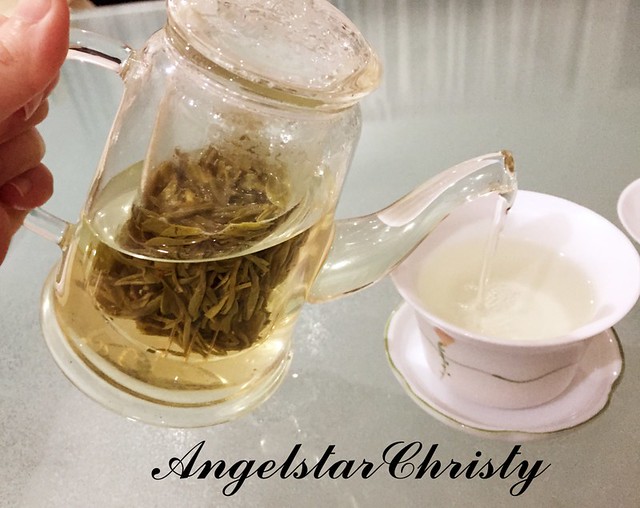
The quality of the Long Jing tea can be determined following infusion; indicated by the colors of the tea when steeped and can even tell the maturity of the tea leaves and the uniformity of the shoots or harvested leaves during the processing routine.
Simple
ways to identify good quality/premium Long Jing:
1.
Before Infusion
-
Color: Light green tea leaves
-
Shape: Flat, very tight
-
Uniform in appearance with whole and tender
leaves
2.
After Infusion
-
Yellow-green color when steeped
-
Lower grade quality could turn bluish or deep
green after steeping
Experienced drinkers could definitely identify the authenticity of the Long Jing tea based on the aroma, flavor and taste of the tea itself, besides the above physical attributes.
Long
Jing is famed for its long-lasting aftertaste and also the complexity of its
taste which are definite giveaway, but of course, only to the veteran and
expert tea drinkers.
The
origins of Long Jing tea or rather, the genuine Long Jing are most commonly
associated with the famous West Lake area (Xihu), Hangzhou in the Zhejiang
Province of China.
The
conservative would strictly recommend that the best Long Jing are from this
area, and it is not hard to understand why since the origins of the tea itself,
from the days of Qianlong, started from here.
The
tea plants are planted in this area; and the area is further divided into four
sub-regions.
Lion
(Shi), Dragon (Long), Cloud (Yun), Tiger (Hu) are the named sub-regions but
their perimeters are vague in their distinctions that the categorizations have
been refined to only three regions:
1 1. Shifeng Longjing
2. Meijiawu Longjing
3. Xihu Longjing (for the rest of the
uncategorized or in a collective noun)
Long
Jing is famed for its origin, owing to the legendary beginnings of the tea
gaining the favor of the well-renowned Qing Dynasty rulers; namely Kangxi and
Qianlong.
Emperor
Kangxi bestowed the title of Gong Cha, or Imperial Tea to Long Jing, making it
one of the most exquisite and highly prized teas due to its royal title.
Emperor
Qianlong, while on his famous Imperial visits was in Xihu (West Lake) and
visited the Hu Gong Temple. There he was presented with a cup of Long Jing tea
and the emperor was captivated by the quality of the tea that he granted the 18
bushes grown outside the temple itself Imperial status.
(Read
more about Qianlong’s associated stories with Long Jing tea here.
Another popular belief is that the best companion to enjoy the highest
quality tastes of the Long Jing tea is to brew it using water from the Hupao
Spring (Spring of the Running Tiger or Dreaming of the Tiger Spring)
Of course, that was probably advised back then as the water of the
spring today is definitely different from before.
The name of the tea also takes from the famous Dragon Well located near
the Long Jing village.
The name Long Jing itself is already a clear translation to mean Dragon
Well, and that is what it is also commonly known; the Dragon Well tea.
The Dragon Well; after which it is named, is reputed to contain water
that is dense and rainwater that falls and touches the surface due to its
lighter weight floats around in a harmonious and sinuous wave manner, perceived
to resemble the movements of a dragon, thus birthing the name of the Dragon
Well.
Long
Jing tea are customarily recommended to be prepared in a typical clay teapot;
or to achieve the best quality, in a Yixing clay teapot.
The slightly porous surface of a genuine Yixing clay teapot is not to
be underestimated, for it is where the qualities of the tea are sustained
whereby a small amount of the tea is absorbed into the pot during the brewing
process. Usually used for black and oolong teas, the teapot can also be used
with green and white though it is important to observe that the temperature of
the teapot should be maintained at only 85°C; approximately 185°F.
The Yixing clay teapot is another fine element in determining the taste
of the tea brewed, and the teapot can even develop a coating on its surface
which can in turn play its part in the retention of the tastes and flavors of
the tea.
It is for this reason the teapot is prized for its qualities and can
cost up to a few hundred thousands of yuan. At the same time, the teapot is
also not to be cleaned with soap and is only recommended to be rinsed with
fresh water and left to air dry to maintain that additional coating formed with
the long use.
The Yixing clay teapot is definitely the right way to go to enjoy the
premium quality of the Long Jing tea.
However, I have opted for the glass teapot and also porcelain cup for
the purpose of displaying the colors of the tea and also the leaves in the
steeping process.


Teavivre’s Long Jing tea is uniform in appearance and the yellowish
green color of the tea is apparent after infusion.
Allow 1-6 minutes for brewing and optimum results are achieved if
brewing temperature is maintained at the recommended 85°C (185°F).
I
love the mild tastes of Green tea; and Long Jing especially is truly a delicate
choice for an afternoon tea.
However,
do take note that green tea are usually acidic in nature and are usually
recommended to enjoy along with food or light snacks.
Long
Jing’s green tea leaves are actually edible as well after infusion, and one can
also enjoy the soft and tender tastes of the tea leaves.
Teavivre’s
Long Jing Green tea is pleasant and light to the taste; in its true Long Jing
form and can leave behind that mild aftertaste, making one long for just
another sip.
Its
origin is from the Shifeng Mountain in Xihu, Zhejiang, China, as printed on the
label of the packaging, further attributing to the authenticity of the Long
Jing tea.
I love how the tea is just light to the taste yet leaving a lingering taste after sips and it is as though the flavor of the tea magnates itself to the tongue.
There
is really not much strong aroma from the brewing either, yet there is that
light and pleasant distinct aroma of green tea significant of Long Jing’s
signature in the air during the infusion.
I
am enjoying every sip of this Premium Grade Dragon Well Green Tea (Long Jing)
from Teavivre.
I
almost could imagine myself sitting in an Oriental pavilion surrounded by
beautiful blooming lotus flowers in the pond (or lake) with a light misty
overcast, enjoying the fresh and crisp air while sipping my tea and magnificent
view.
I
could hear the willow trees softly humming their tunes while swaying gracefully
to the rhythms of the wind.
Ah,
the bliss of such serenity and peace and it is no wonder many are of poetic
nature then.
Long
Jing tea is one of sophistication, and it is not hard to understand why, with
its roots in the Imperial status and value which makes it one of the finest
teas around enjoyed only by the upper class noblemen and royalty.
Teavivre
offers one of the most extensive selection of Chinese teas on the web, and
ordering and shipping can be done easily with just a click on their interactive
and user-friendly website.
Their
customer service is really helpful and informative too; there really is not
much difficulty to purchase or even to look up the tea you want here.
I
am looking forward to trying the rest of the teas!
*This is a sponsored Post and the tea mentioned in the post is the Premium Grade Long Jing Green Tea, from Shifeng Mountain, Xihu, Zhejiang, China courtesy of Teavivre *
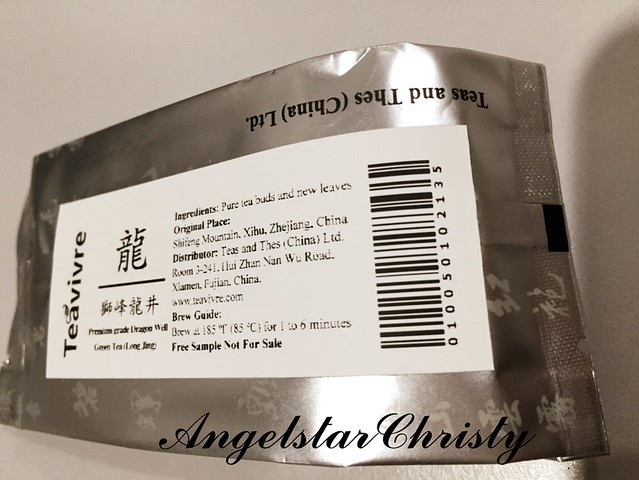
Teavivre Official Website

Teavivre Official Website
Stay tune to my posts and daily life~
LIKE my Facebook Page
Follow Me on Twitter @Angelstar
Follow my Google+
Stalk me on Instagram @AngelstarChristy


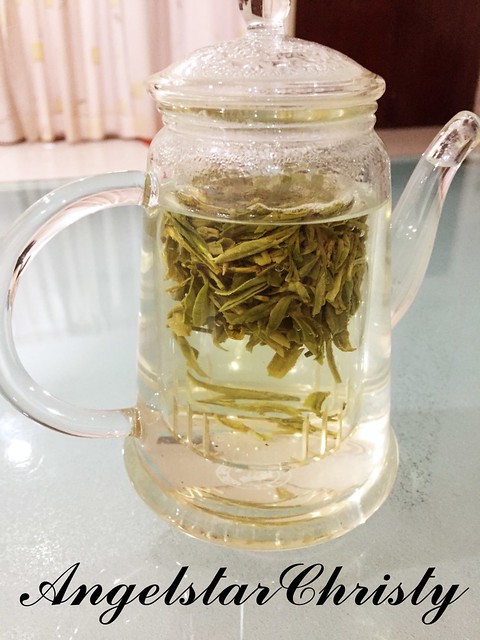

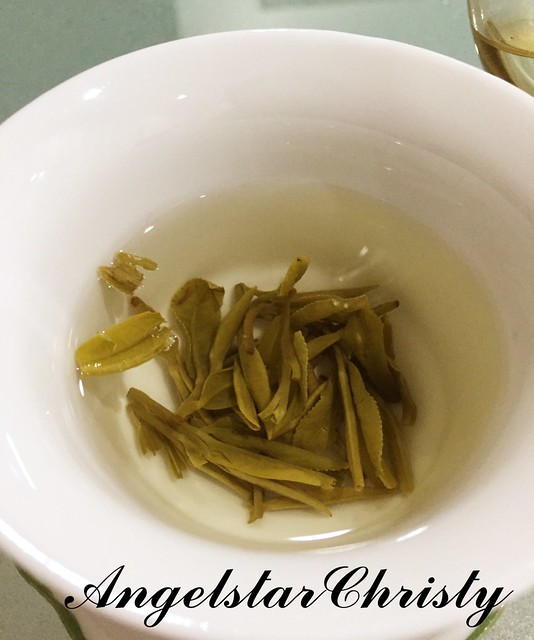
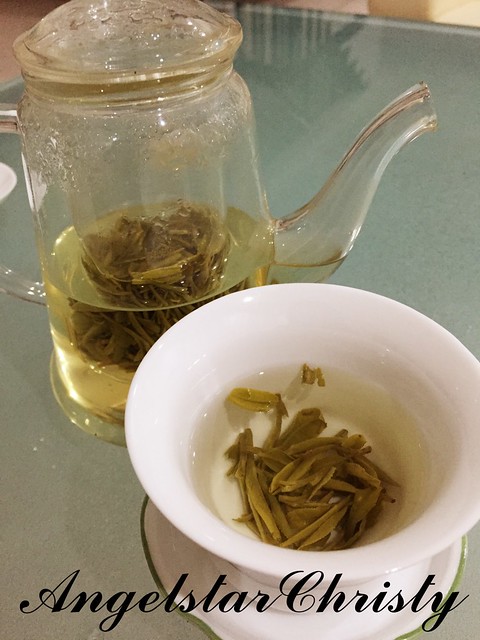
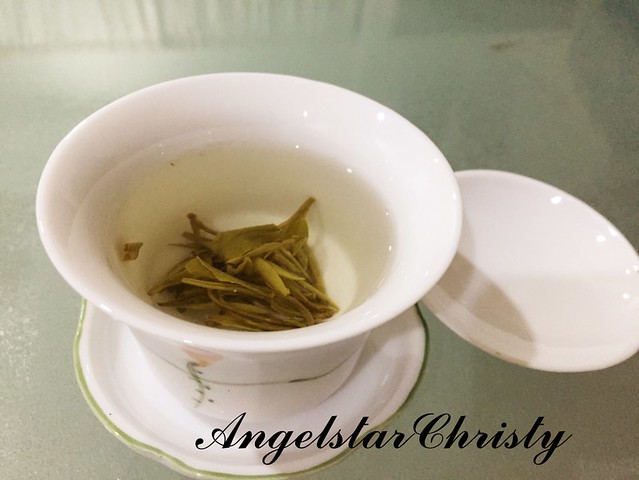
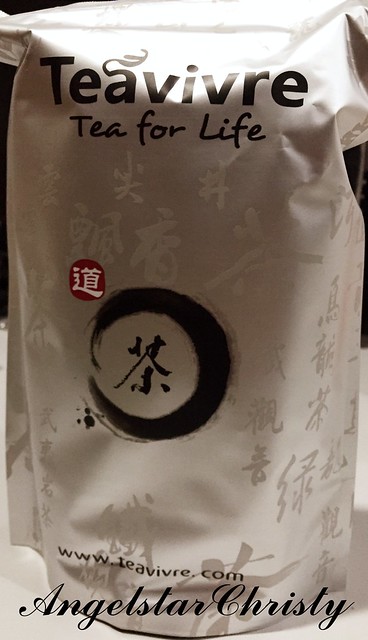


3 comments
Hi Angelstar Christy
ReplyDeleteI am a hugh fan of your blog. I am really enjoying your posts, especially this post about yixing clay: http://www.angelstarchristy.com/2015/06/the-story-of-chinese-tea-long-jing.html?m=0
Very detailed and valuable information. It helps me a lot.
I am a yixing clay teapots lover, and I am learning about yixing clay, as we know there are many advantages in brewing tea by yixing clay teapot. Yixing clay is the best clay in China and most tea lovers use it to brew tea.
I know you're busy, so I won't waste your time. I'm reaching out because I have an idea share to you. I am doing a research about yixing clay and planing to write a post about yixing clay, can you kindly provide me few tips and guidances in yixing clay? By the way, I am the owner of Umi Tea Sets Store. I am Chinese. Our store have some exquisite yixing tea sets, I have picked a handmade genuine yixing tea set and sent to you as gift, it come with a gift box and yixing clay certificate. It is totally free, hope you can accept my first gift, and hope we can become friend. so we can talk more about Yixing clay next.
Thanks for your time and consideration! Looking forward your reply. I will sent you the photos of the yixing tea set gift then.
Cheers,
Umi Tea Sets
Hi Umi!
ReplyDeleteGreat to hear from you and thanks for your interest and support!:)
I have left you a reply in your inbox, do check it out and look forward to chatting with you more!
Christina
Tea swan is a premium tea wholesaler offering a great selection of exotic premium Organic, loose leaf tea from Darjeeling, Assam, Nepal and China at bulk and for wholesale. As a wholesale loose leaf tea supplier, assure that our teas are obtained from various tea manufacturing regions of India, and unassuming to suit you and your customer's palate.
ReplyDelete